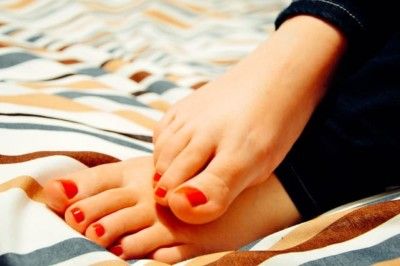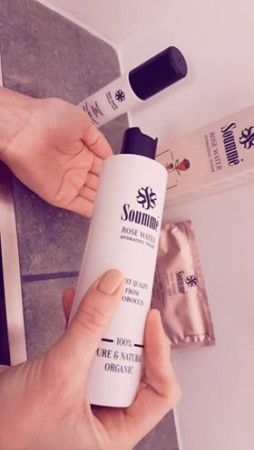Recognize and treat nail fungus infection
Onychomycosis is a fungal nail infection that occurs mainly on the toenail and occasionally on the fingernail. However, a nail fungus infection is not a threatening disease. But if the fungal infection is left untreated, it can cause serious health problems, because the fungus can completely dissolve the affected nail if it is not treated.
Since a fungal infestation does not dissolve by itself, an effective anti-fungal treatment is always necessary. Although this requires regular applications with a suitable preparation over a longer period of time. However, good treatment results can be achieved.
How does a nail fungus infection occur??
In principle, no one is protected from a nail fungus infection. However, there are certain risk factors that favor the occurrence of nail fungus. Since fungi grow particularly well in a warm, moist environment, feet and toenails in particular tend to provide an ideal breeding ground for fungi.
Athlete’s foot and nail fungus often occur together. Sweating in socks and shoes as well as moisture in the spaces between the toes promote the development of athlete’s foot. Where once a fungus spreads, it may well lead to a second fungal disease, the nail fungus, to join it. A weakened immune system, circulatory disorders and diabetes also promote susceptibility to fungal diseases.
Dangers of infection lurk almost everywhere. Regular breeding grounds for fungi can be found, for example, in
- Swimming pool
- Sauna
- Gym
- Shoe store
- Bathroom
- Hotel room
as well as on all artificial soils and utensils such as nail files, nail clips and nail scissors. Depending on the type of fungus, infection is caused by filamentous fungus pathogens or fungal spores. Typical ways of infection are contact infection and smear infections.
In public wellness facilities, swimming pools, gyms and hotels, a fungal infection can usually be avoided by wearing bathing shoes. At home, each member of the family should use their own tools for foot and nail care in order to reduce the risk of infection.
If a fungal infection is known, bathing shoes should also be worn at home and the floors of common areas – especially bathrooms – should be thoroughly cleaned regularly. Athletes and diabetics should check their feet daily for foot and nail fungus infestation.
How to recognize nail fungus?
The fastest treatment successes can be achieved if nail fungus and, if necessary, athlete’s foot are detected early and treated as soon as possible.
Recognize symptoms of nail fungus
In the early stages, fungal infection of the toenail can be recognized by the fact that the toenail develops a slightly roughened and knobby surface at the front edge of the nail. The fungal spores penetrate the nail, eating it up from the inside out. Cavities occur in the nail plate, which becomes bulging and porous.
In the advancing stage, the rough nail surface spreads over the entire toenail. Yellowish and brownish discolorations of the toenail can occur. In addition, it loses its natural rosy coloration as well as the shine.
If the nail fungus disease remains untreated, the dissolution of the toenail will continue. This can lead to the keratin layer becoming crumbly, the toenail lifting off and, in the further course of the disease, the entire nail bed being exposed. The sensitive nail bed is then no longer protected and is therefore particularly sensitive and susceptible to injury.
Recognize symptoms of athlete’s foot
Athlete’s foot is also caused by filamentous fungi (dermatophytes), molds or, more rarely, yeasts. Often the first foot fungus Symptompe in the toe interspaces make themselves noticeable. Unpleasant itching, water blisters and later dry and cracked skin indicate the infection with the annoying fungus. If effective athlete’s foot treatment is not carried out, the fungus can spread to the toe surface, sole of the foot and heel area.
To minimize the risk of infection, care should be taken to dry the feet and the spaces between the toes thoroughly after bathing and showering and to walk barefoot as often as possible. Frequent contact with air keeps the skin dry, which minimizes the risk. For the same reason, the risk of infection with fingernail fungus is much lower.
Sweating in socks and shoes increases the risk of athlete’s foot. For heavily sweating feet, foot baths with sage, frequent changes of socks and anti-sweat inserts for shoes are recommended. Special foot powders help to keep feet dry and healthy.
Treat nail fungus: Consistent application and patience required
For the nail fungus treatment several treatment methods come into consideration. Common treatment is the use of an antifungal varnish, which is applied regularly to the affected toenail. Treatment must be continued until the areas affected by the fungus have been completely removed and the toenail or heel nail has grown back. Fingernail has grown back completely. This can take between 6 to 12 months.
Anti-fungal varnishes are available over-the-counter in pharmacies. At least in the case of advanced fungal infestation, an examination should be carried out by the family doctor or dermatologist. As part of a medical examination, some skin or horn is scraped off the nail and a fungal culture is taken to determine the fungal pathogen.
According to the findings, effective medications with antibiotic and/or fungistatic agents such as terbinafine, itraconazole, fluconazole, griseofulvin, bifonazole, tavaborole, ciclopirox or the antimycotic amorolfine can be prescribed.
Nail fungus therapy is mainly carried out by external treatment with nail varnish, cream, ointment or spray. Depending on the symptoms, internal application with suitable medicines or treatment with a nail fungus laser may also be indicated.


